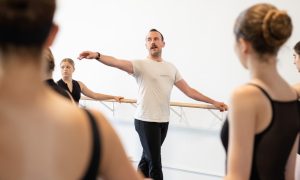The mind-body connection, while not a novel phenomenon, has become a trendy topic in health and wellness circles. Often used as a selling point for various health programs, the mind-body connection is inherent in everyone. Its accessibility may not be so apparent, and this is where we can go overboard trying to access or “perfect” it. Furthermore, connecting the mind and body can be harmful when forced or done so from an uninformed lens. Dancers especially can be susceptible to emotional and physical injury because of certain conditioning. This can lead to unhealthy mind-body strategies that can exacerbate the very issues we are looking to manage.
How might dance culture influence misuse of the mind-body connection?
#1. Perfection
This is very prevalent in the dance community. The idea of perfection is an illusion anyway. This sets us up for comparison, stress and pushing beyond our limits. The mind-body connection is not something to be perfected but experienced and lived.
#2. Over practicing
This goes hand-in-hand with the notion that “practice makes perfect.” The mind-body connection is to be experienced and honored, not practiced like a routine or piece of choreography.
#3. Competition
The dance world is no stranger to competition, and yet this can play a huge role when harnessing the mind-body connection. Posing as a well-rounded dancer who has training in mind-body, somatics or movement practices can look good on a resume but doesn’t always translate into ethical practice.
#4. Not trauma-informed
While this is changing, there are many things about dance culture that perpetuate trauma or even create pathways for it. Facilitating a mind-body exercise from an uninformed lens can cause further harm and create a mind-body split.
#5. Instructional
Traditional settings for dance tend to be instructional, which can be counterproductive when trying to experience the mind-body connection. This can lend itself to a “perfect” or “right way” mentality. Facilitation fosters exploration while instruction can focus more on a directive or order.
You might be wondering how something natural or inherent in us can be harmful or misused. The irony is that even though the mind-body connection exists, so many individuals have overridden its programming and live in a state of disconnect. This is perpetuated by our own colonizing societies and cultures that package and sell “the cure” for the very thing they created. It’s not that we need to buy into the mind-body connection. We need to relearn how to safely access it.
How can we tap into and gently access the mind-body connection safely?
#1. Cultivate awareness.
Take time to notice how your mind and body are already connected. For inspiration, try this free Body Awareness for Mental Health Journal.
#2. Practice makes habit.
It isn’t about perfection but setting aside time to acknowledge the connection and making this a part of everyday life. The more we expose ourselves to a new experience, the faster it becomes a habit.
#3. Set boundaries.
Only you know what it feels like to be in your body. If something doesn’t feel appropriate or safe, allow yourself to set limits. This is difficult especially when we have been conditioned to push our limits or silence our own needs.
#4. Listen to your body.
Your body is always talking. Tune in and take notice of what message it is trying to send you. This might require limiting distractions in order to be with your body and its needs.
#5. Check your environment.
If you don’t feel physically or emotionally safe in your environment, then it will be more difficult to explore your authentic mind-body connection. Identifying places and people that feel supportive and accepting is a great place to start.
So why bother? Well, prioritizing our mind-body connection can have immense benefits. It can lead to longer careers, injury prevention, faster recovery from injury, and overall a healthier mind and body. Outside of the dance studio, it can improve our relationships, cultivate purpose, and foster self-acceptance, self-esteem and overall life satisfaction. Who doesn’t want that? Most importantly, tapping into the connection between mind and body allows us to take responsibility for our mental health, which is something everyone needs right now.
*The famous quote, “A mind is a terrible thing to waste,” was part of a campaign slogan used by the United Negro College Fund in 1972. The goal of the campaign slogan was to highlight the necessity of education.

By Erica Hornthal, LCPC, BC-DMT, Dance/Movement Therapist.
Erica Hornthal is a licensed professional clinical counselor and board certified dance/movement therapist based in Chicago, IL. She received her MA in Dance/Movement Therapy and Counseling from Columbia College Chicago and her BS in Psychology from the University of Illinois Champaign-Urbana. Erica is the founder and CEO of Chicago Dance Therapy, the premier dance therapy and counseling practice in Chicago, IL. As a body-centered psychotherapist, Erica assists clients of all ages and abilities in harnessing the power of the mind-body connection to create greater awareness and understanding of emotional and mental health. For more, visit www.ericahornthal.com.















